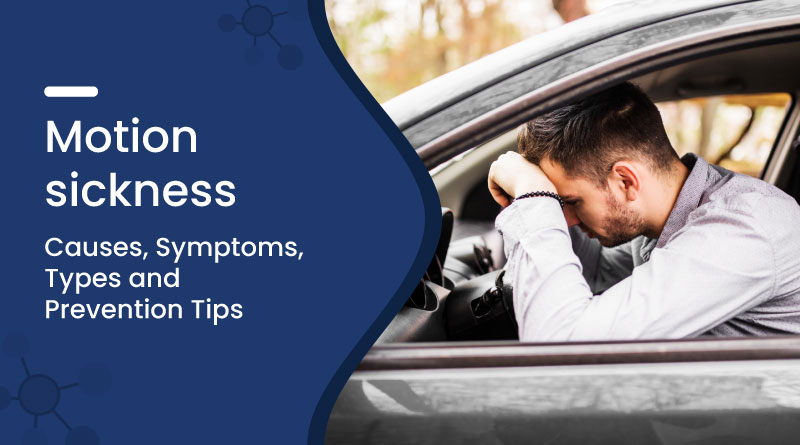Motion Sickness: Causes, Symptoms, Types, and Prevention Tips


What is Motion Sickness?
Motion sickness is a common condition that occurs when the brain receives mixed signals from the inner ear, eyes, and other parts of the body. It can happen during travel by car, boat, plane, or even amusement park rides. This conflicting information confuses the brain, leading to a range of unpleasant symptoms.
What Causes Motion Sickness?
The main cause of motion sickness is a sensory mismatch. For example, when you're reading a book in a moving car, your eyes see a stationary page, but your inner ear feels motion. This disconnect can trigger the brain to respond with nausea, dizziness, and other symptoms.
Other causes may include:
- Watching fast-moving visuals or virtual reality simulations
- Being in a confined or poorly ventilated space
- Strong smells, such as fuel or food, during travel
- Anxiety or stress related to travel
Symptoms of Motion Sickness
The symptoms of motion sickness can vary from mild to severe and usually start with a feeling of unease or discomfort. Common symptoms include:
- Nausea and vomiting
- Dizziness or light-headedness
- Cold sweats
- Pale skin
- Headache
- Fatigue
- Increased salivation
Symptoms usually go away once the motion stops, but in some cases, they can linger for a while.
Types of Motion Sickness
Motion sickness isn’t limited to travel. There are several types of motion sickness based on the triggering activity:
- Travel Sickness: Caused by car, bus, boat, or airplane movement.
- Virtual Reality Sickness: Triggered by virtual reality or screen-based motion.
- Space Motion Sickness: Experienced by astronauts due to zero gravity.
- Simulator Sickness: Occurs in flight simulators or 3D environments.
Who is Susceptible to Motion Sickness?
While anyone can experience motion sickness, some people are more prone than others. Factors that increase susceptibility include:
- Children between ages 2 and 12
- Women, especially during pregnancy or menstruation
- People with a history of migraines
- Those with inner ear disorders
- Individuals with a family history of motion sickness
Diagnosing Motion Sickness
There is no specific test to diagnose motion sickness. A doctor usually makes the diagnosis based on symptoms and a description of when they occur. In some cases, the doctor may rule out other conditions such as ear infections, migraines, or neurological disorders.
If your symptoms are frequent or severe, it's important to consult a healthcare provider for proper evaluation and treatment options.
Tips to Prevent and Manage Motion Sickness
Here are some practical tips to help you prevent or reduce motion sickness:
- Choose the right seat: Sit in the front seat of a car, over the wing in an airplane, or mid-ship on a boat.
- Look at the horizon or a fixed point.
- Keep your head still and avoid reading or staring at screens.
- Ensure good ventilation and fresh air during travel.
- Eat light, bland meals before travel—avoid spicy or greasy foods.
- Use over-the-counter remedies like antihistamines (e.g., Dramamine).
- Try acupressure bands or ginger supplements, known to help some people.
Also Read - Motion Sickness Tablets
Conclusion
Motion sickness can be an uncomfortable experience, but understanding what causes motion sickness and recognizing the symptoms can help you manage it effectively. Whether you're prone to travel-related discomfort or experience nausea from screen motion, there are plenty of strategies to help you feel better.
If motion sickness interferes with your daily activities or travel plans, consult a healthcare provider for personalized advice. With a few preventative steps and the right care, you can keep motion sickness under control and enjoy the journey ahead.
Recent Blogs
Disclaimer : Zeelab Pharmacy provides health information for knowledge only. Do not self-medicate. Always consult a qualified doctor before starting, stopping, or changing any medicine or treatment.
















 Added!
Added!